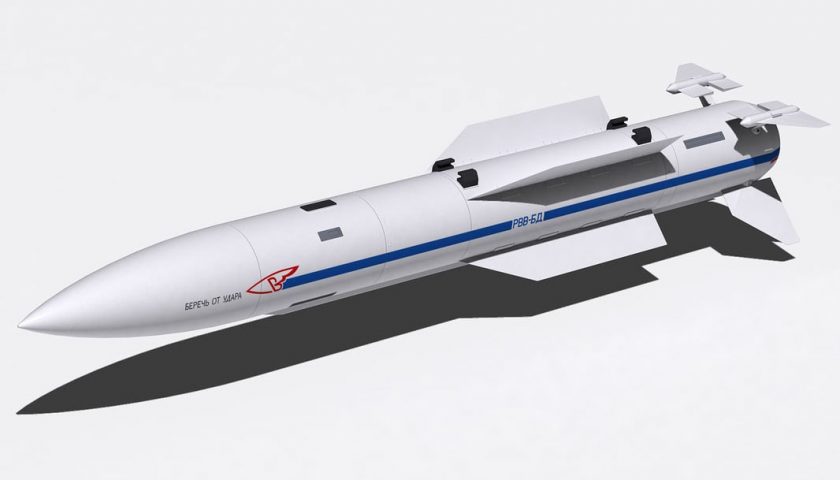
Test firing of the Russian R-37M hypersonic air-to-air missile (also known as RVV-BD) from the Su-35 fighter jets are planned for end-2020 while flight tests to confirm compatibility with the Su-35 have already commenced.
The R-37M is intended to be the main long-range air-to-air weapon for current and future Su and MiG type Russian fighter jets well into the next decade. It is intended to replace the R-77 missiles whose maximum range is around 100 km at supersonic speeds (2-3 times the speed of sound) compared to the R-37M’s 200 km at hypersonic speeds (six times the speed of sound).
The missile will compete with the Raytheon-made AIM-120C (160 plus km range), the AIM-260 JATM (200 km plus range) being developed by Lockheed Martin and MBDA’s Meteor (160 km range with 60 km ‘no-escape-zone’) that is among the weapons for the Rafale, Gripen and F-35 jets .
The R-37M (RVV-BD)’s hypersonic speed allows it to overcome the distance to the target even at maximum range in two to three minutes, Izvestia said quoting sources. The inertial navigation system, built on high-precision laser gyroscopes, guides it for most of the flight path to the target. If the target suddenly changes course, the missile trajectory can be corrected from the launching fighter via a radio link. The homing radar is activated in close proximity to the target causing its warhead to explode and to avoid detection until too late.
Though the missile is claimed to have a 200 km range, the ideal targeting distance (also known as no-escape-zone) depends upon the type of enemy aircraft; for fighter jets it is 40–70 km, for stealth aircraft or cruise missiles, this distance would be less, for large bombers or early warning aircraft, the effective firing distance could be greater than 70 km-100km. The missile is able to take advantage of its hypersonic speed at relatively shorter targeting distance and hit enemy aircraft equipped with the most sophisticated missile detection systems.
According to Tactical Missiles Corporation, the manufacturer of the RVV-BD, the missile’s guidance system is inertial with data link update and active radar homing at final path leg. Propulsion – a double mode SPR featuring missile internal start following separation from launch aircraft. Fuse – radar active proximity and impact target sensors. Warhead – HE blast fragmentation.